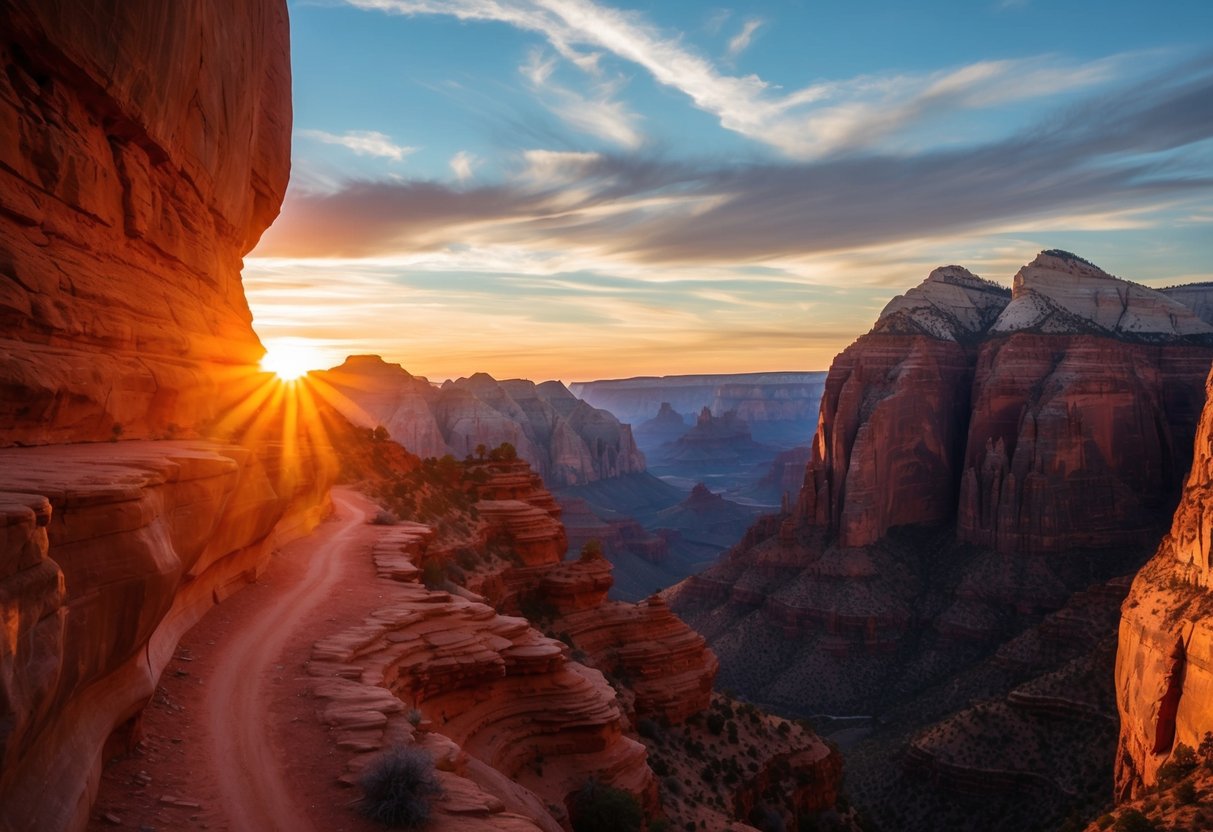
Seasonal Highlights and Best Times to Visit
Visitors to Zion National Park will find that spring and autumn offer distinct natural beauty and optimal conditions. Spring features vibrant wildflower blooms while autumn presents a stunning display of foliage colors.
Spring Bloom
In spring, Zion National Park transforms into a picturesque landscape of blooming wildflowers. This includes species like the striking Zion daisy and Indian paintbrush. Temperatures are mild, making it an excellent time for hiking and exploring the park’s trails. The Virgin River flows more robustly, creating stunning views along its course. Photographers are drawn to the park during this season due to the rare combination of colorful flora and flowing waterways. Spring is ideal for those interested in plant species and seeking comfortable weather conditions for outdoor activities.
Autumn Colors
Autumn brings a breathtaking tapestry of colors as the leaves of cottonwoods and oaks shift to brilliant yellows and reds. The fall season is perfect for visitors wanting to capture the radiant scenery with dramatic cliffs as a backdrop. Cooler temperatures add to the appeal, providing pleasant conditions for trekking through the park’s extensive canyon systems. Stargazing during this time is particularly rewarding, with clear skies offering mesmerizing views of constellations. This season is favored for those wanting to experience both the vibrant foliage and excellent celestial displays.
Conservation Efforts and Park Stewardship
Zion National Park places a strong emphasis on maintaining its natural beauty and biodiversity. Key conservation efforts focus on protecting endangered species and fostering community involvement through volunteer programs.
Protecting Endangered Species
Conserving endangered species is vital for maintaining Zion’s ecological balance. The park is home to the California Condor, an iconic species facing survival challenges. Intensive monitoring and management efforts aim to bolster the condor population. These efforts include captive breeding programs and collaboration with wildlife biologists to track bird movements. Moreover, habitat protection plays a crucial role. This involves safeguarding nesting sites and minimizing human disturbances. Regulations also limit activities that could harm these birds, ensuring their continued presence in the park’s skies.
Volunteering and Support
Community involvement is essential for the park’s conservation initiatives. Volunteers participate in activities such as trail maintenance, habitat restoration, and visitor education programs. These contributions significantly aid in preserving the park’s landscapes. Various organizations support and conduct initiatives, fostering a strong community of stewards. Wilderness permits, required for specific activities, help in monitoring visitor impact. These permits regulate access, ensuring sustainable use of the park’s resources. By engaging with these programs, individuals contribute to the long-term protection and enjoyment of Zion National Park. Volunteer efforts not only preserve the natural environment but also enhance visitor experiences.